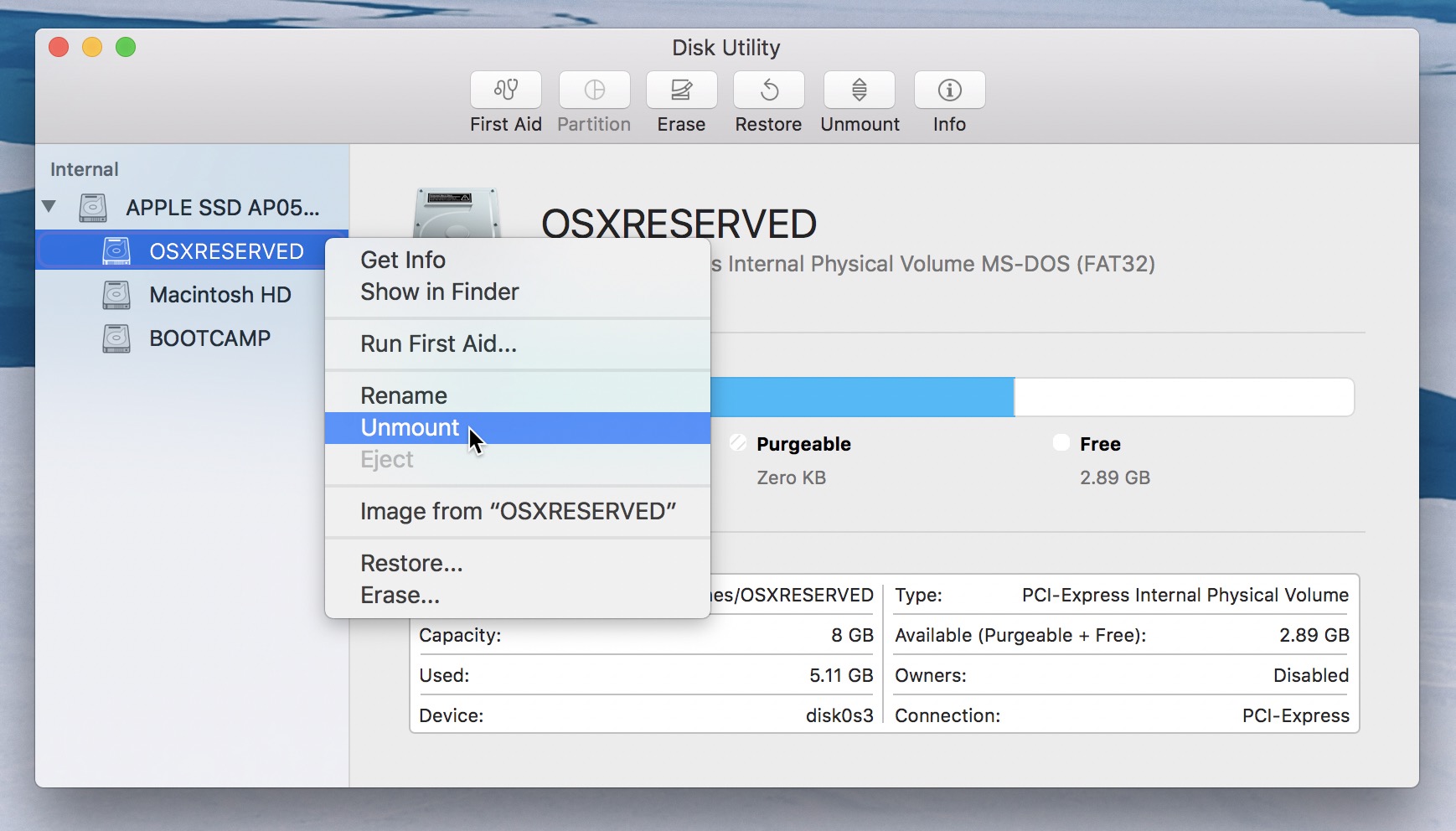
Step 2: Right-click again on the drive in the left panel and this time select Restore with Disk Image. Step 3: Select the DMG file and click on Open. Once the process is complete, you can eject the drive and use it on a Mac. To boot from this media, hold down the Option key and fire up your Mac.
| Click here to return to the 'Restore a full-disk .dmg file to a raw block device' hint |
Wow, great hint. This is going to go to good use. Thanks!
- Jul 12, 2011 The DMG is compressed, and only 4.5gb, but it was captured from a 15gb partition that is now only 14.5gb. In short, Disk Utility sees a smaller partition and refuses to restore. The recovery partition is also hidden from Disk Utility, FWIW. I can see it.
- Mar 03, 2018 I would put old drive back in and create an image with System recovery and C: only and if BIOS install, put new drive back in and delete all current partitions except Recovery partition using Windows Install DVD or USB for a new install and format drive Quick NTFS on C:. Now it should be 2 partitions, 200MB and the rest C:.
- Nov 11, 2019 If you would rather add a smaller amount, you can do so by selecting the Stuff volume, entering a new size in the Size field, and then pressing the return key. This will cause the selected volume's size to change, and create a new volume made up of any free space that's left over.
Somehow I thought that was what the menu item Images -> Scan Image for Restore always did... but I suppose there has been at least one occasion where this may have actually been what I needed.
g=
Happily, I've never found myself in a position where I needed to restore my backup image files, (made with Carbon Copy Cloner.) But I'd like to know the routine if I ever need to use it.
My question: since I back up separate partitions into separate disk image files, is this hint inapplicable to me? Does this hint only apply to backing up multiple partitions into a single disk image?
(I had no idea it was even possible to backup multiple partitions to a single disk image...)
This is great. I was getting real frustrated with Disk Utility's non-specific error messages. This worked just like you said it would.
Great post. However, when I tried this I got a 'Resource busy' error.
In order to avoid this problem, you have to make sure the mac OS isn't 'using' the device first. To do this just open the DiskUtility.app, and on the target USB hard drive, unmount any of it's partitions. Make sure to not eject the USB hard drive so that the device is still available in DiskUtility and shows up in the result from 'diskutil list'.
Restore Dmg To Smaller Partition File

Restore Dmg To Smaller Partition Software
Many thanks to you and daveosborne for your hints !
1) I'm currently dumping the content of a .dmg file to an external disk.
2) 'with an appropriate buffer size to copy over the whole block image, including partition table and boot sector'
-> what do you mean by that and how can I determine which buffer size is appropriate ?
-> how did you determine the 131072 size ?
For my use I trusted blindly the example and used the bs=131072 option. Untill now it seems to be working... (it's still copying).
I'm currenlty getting tons of lines on my terminal screen that look like :
...
CZlibDecompressor::decompressData: src 0x02E4AA97 srcLen 116073
CZlibDecompressor::decompressData: dest 0x02E26000 destLen 262144
CZlibDecompressor::decompressData: src 0x02E61F0D srcLen 20723
CZlibDecompressor::decompressData: dest 0x02E26000 destLen 262144
...
with sometimes long series of
...
CZlibDecompressor::decompressData: src 0x02E66B71 srcLen 1167
CZlibDecompressor::decompressData: dest 0x02E26000 destLen 262144
CZlibDecompressor::decompressData: src 0x02E66B71 srcLen 1167
CZlibDecompressor::decompressData: dest 0x02E26000 destLen 262144
...
I notice the destLen (I suppose it means block destination length) 262144 is exactly the double of the bs=131072 that was used before. I'm curious if anyone can help me understand this. Does this mean the source data is sparsed over the destination disk by blocks of 131072 or 262144 bytes, thereby fragmenting the disk ?
In your replies, please kindly take into account that I'm a French newbie with a fair level of ignorance of OSX command line technical slang, however not completely ignorant with computers either (one piece of paper even says I'm an engineer :), it's just that I don't understand what the buffer size technically means here.
Many thanks in advance for your insights !